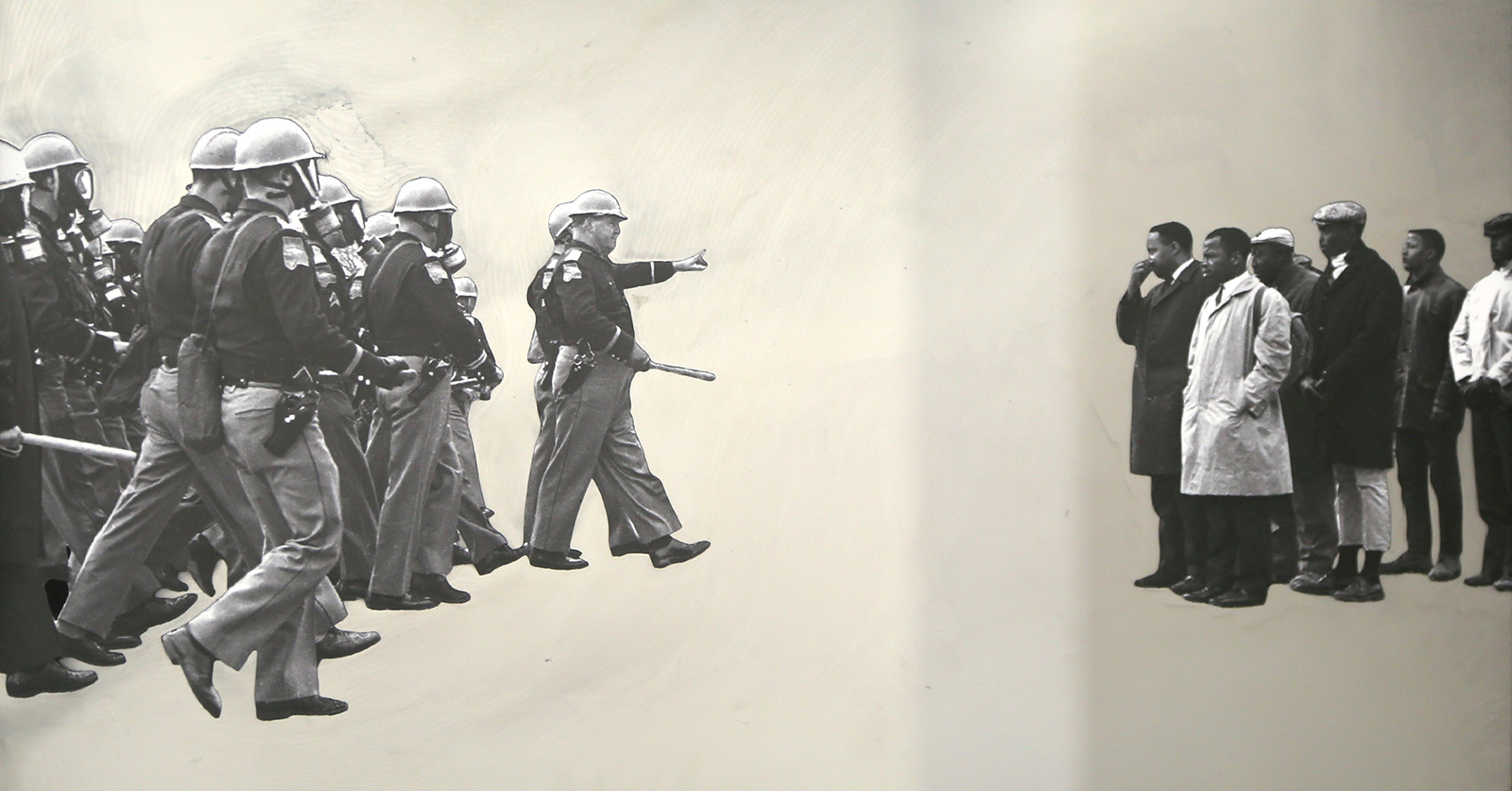
Thursday, November 3, 7 PM
“Part of advertising’s success is based on its ability to reinforce generalizations developed around race, gender and ethnicity which are generally false, but [these generalizations] can sometimes be entertaining, sometimes true and sometimes horrifying.” ─ Hank Willis Thomas, Time magazine, April 19, 2011
Hank Willis Thomas, a prolific conceptual artist who was born in New Jersey and lives and works in New York City, will deliver the Annual Barbra and Andrew Rothschild Lecture at the Nasher Museum, a talk entitled, “For Freedoms.”
Two of Thomas’s works are part of the Nasher Museum’s collection. The museum also helped commission a new work, Ain’t Gonna Let Nobody Turn Us Around, for the occasion of Southern Accent: Seeking the American South in Contemporary Art. Thomas is known for exploring themes related to perspective, identity, commodity, media and popular culture. He often incorporates recognizable icons into his work, many from well-known advertising and branding campaigns.
Thomas earned a bachelor’s degree in photography and Africana studies from NYU in 1998, as well as a master’s degree in fine arts (photography) and a master of arts degree in visual and critical studies from California College of the Arts in San Francisco in 2004. His work is part of many museum collections, including the Whitney Museum of American Art, The Brooklyn Museum, Museum of Modern Art, New York and the Solomon R. Guggenheim Museum, among others.
Ain’t Gonna Let Nobody Turn Us Around presents a portrait of an evolving South, one actively affected by the agency of its citizens. Thomas assembled images upon mirrored surfaces that reproduce reporter James “Spider” Martin’s photographs of the Selma to Montgomery civil rights marches, taken for the Birmingham News in the mid-1960s. Some of the images show civil rights activists under extreme duress, such as on “Bloody Sunday,” March 7, 1965, when they were gassed and clubbed by law enforcement officers as they attempted to cross the Pettus Bridge in Selma. Thomas also selected images of strength and defiance, such as Hosea Williams and John Lewis leading marchers as they faced advancing police on Bloody Sunday, and Martin Luther King, Jr., giving his triumphant speech upon arriving in Montgomery. By placing mirrors behind Martin’s images, Thomas pulls viewers into the work, implicating them in the events they see. In fusing past and present, Thomas forces the questions: what has changed since 1965, and how do we each play a role in creating history?
Southern Accent also includes Thomas’s interactive video installation, Black Righteous Space (Southern Edition), which upends common perceptions of Confederate imagery. By visually uniting the Confederate flag with the red, black and green colors of Pan-African liberation, the video brings together oppositional ideologies and disrupts traditional representations of the flag. The work’s kaleidoscopic imagery is set in motion by a soundtrack of southern songs, speeches and dialogue by black leaders, specially mixed by the artist for this exhibition. Visitors may also activate the art by speaking into the microphone in front of the projection.
Parts of this text are excerpted from essays by Miranda Lash and Trevor Schoonmaker, co-curators of Southern Accent and editors of the accompanying catalogue.
Hank Willis Thomas, Ain’t Gonna Let Nobody Turn Us Around, 2015–2016. Glass, silver, and digital prints; dimensions variable. Commissioned by the Nasher Museum of Art at Duke University, Durham, North Carolina. Courtesy of the artist and Jack Shainman Gallery, New York, New York. © 2016 Hank Willis Thomas. Original images © 1965 Spider Martin.

